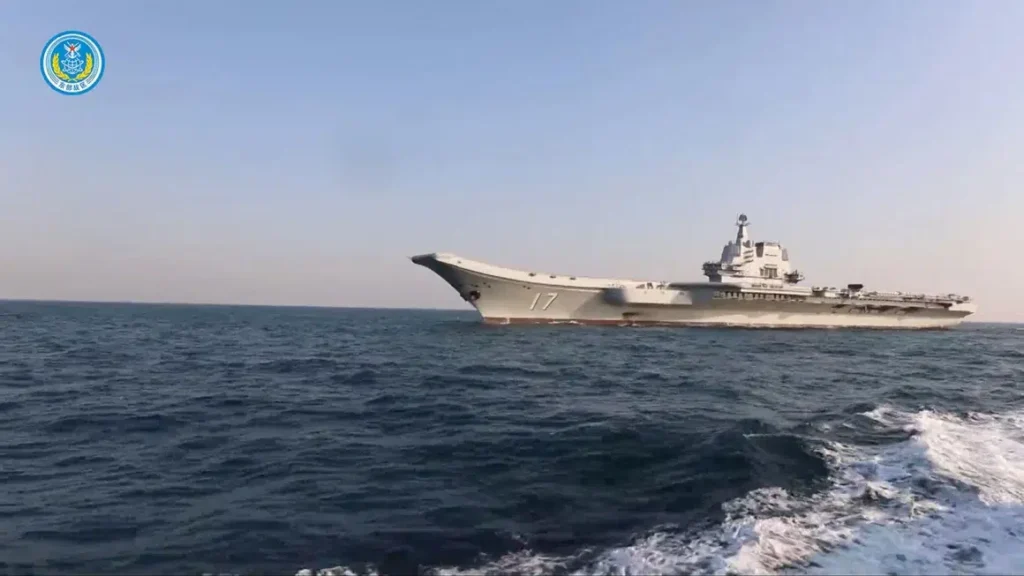China-Taiwan Military Drills Escalate Tensions: The recent China-Taiwan military drills have raised alarms in the international community, signaling heightened tensions across the Taiwan Strait. China announced military drills around Taiwan on Tuesday in a “stern warning” against separatism.
The exercises were held off Taiwan’s northern, southern, and eastern coasts. Beijing has escalated its language about Taiwanese President Lai Ching-te, with the Chinese military calling him a “parasite.” Taiwan dispatched warships in response.
The exercises come on the heels of a visit to Asia by U.S. Defense Secretary Pete Hegseth, who criticized China’s behavior. The deployment adds an unsettling air as China doubles down on its claim to Taiwan.
Also Read | Trump Slams Putin Over Ukraine Ceasefire and Shifts US-Russia Diplomacy
China-Taiwan Military Drills Escalate Tensions: Insights
- China held military exercises around Taiwan, raising tensions.
- The Chinese military deployed ships, aircraft, and artillery in the drills.
- Taiwan redeployed warships to intercept Chinese forces.
- The rhetoric from China’s government against Taiwan’s leadership has grown increasingly belligerent.
- The United States condemned China’s actions, promising to continue supporting Taiwan.
- The ongoing China-Taiwan military exercises have become a focal point of U.S.-China relations, with the U.S. reaffirming support for Taiwan’s security.
- Experts believe the drills are a flex in light of U.S.-China tensions.
Background
Taiwan is considered a province of China, and Beijing has also held military drills near Taiwan. Beijing conducted similar war games last May, soon after Lai Ching-te was inaugurated. These included simulated missile attacks and a blockade scenario. Taiwan rejects China’s sovereignty claims, maintaining its future is for its people to decide.
The drills come amid increasingly strained relations between China and the U.S. as American officials have continued to provide diplomatic and military support to Taiwan. The region is at the center of U.S.-China relations.
Analysts warn that the China-Taiwan military standoff could escalate further, as both sides continue to increase their military presence in the region.
Main Event
The latest military drills were conducted by China’s Eastern Theatre Command, the force responsible for the island. They involved ships, aircraft, and artillery and simulated air and sea attacks, blockades, and air interceptions. Taiwan’s government quickly condemned the drills, labeling China a “troublemaker.”
Taiwan dispatched its navy to respond, tracking over 10 Chinese warships near its 24-nautical-mile contiguous zone. Taiwan said there was no live fire despite the aggressive maneuvers. China-Taiwan military confrontations are increasingly common, as China pressures Taiwan to accept its sovereignty claims.
The drills have been defended by the Chinese foreign ministry, which said they were “legitimate actions” to protect sovereignty. The spokesman, Guo Jiakun, reiterated Beijing’s position, insisting that Taiwan’s reunification “has to happen.”
Chinese state media responded with propaganda videos showing warships circling Taiwan and depicting President Lai as a parasite. The messaging sought to undermine Taiwan’s leadership while showing off military readiness.
American officials denounced China’s maneuvers, while the American Institute in Taiwan pledged ongoing support for the island. A senior Taiwan security official proposed that China aimed its drills at avoiding a confrontation with the United States while keeping its internal control.
The drills came amid a broad anti-corruption purge in China’s military. Analysts say the drills also helped divert Chinese soldiers from grievances about the crackdown.

The recent military drills between China and Taiwan have sparked concerns globally, indicating increased tensions in the Taiwan Strait.
Photo Credits: REUTERS.
Implications
China’s Ongoing Military Drills Send a Clear Message to Taiwan and the World The exercises underscore Beijing’s readiness to raise the stakes, maintaining the pressure on Taiwan. The situation poses security concerns for neighboring countries, including Japan and the Philippines, both American allies.
Taiwan’s government stands its ground, asserting its right to self-government. The U.S. made clear its commitment to Taiwan, jeopardizing more diplomatic friction with China. The drills also signal China’s strategic response to internal challenges, including military corruption and economic uncertainty.
Conclusion
Yet again, China’s recent military exercises around Taiwan show how precarious relations are across the Taiwan Strait. Taiwan will not abandon the mask, even as China wants to do just that. The U.S. and its allies have continued to monitor the situation but must balance the demands of diplomatic and military strategy.
The China-Taiwan military drills, involving ships, aircraft, and artillery, demonstrate China’s commitment to its territorial ambitions over Taiwan. Future developments will hinge on China’s actions and the international community’s response.
As with the world, tensions continue, and we are on high alert for every little sign things might escalate further.



